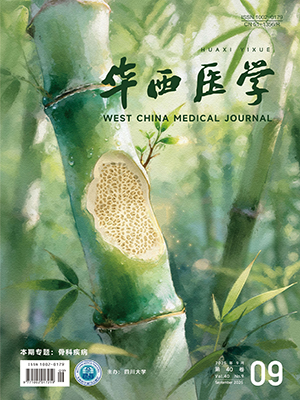| 1. |
Dinis-Oliveira RJ, Duarte JA, Sánchez-Navarro A, et al. Paraquat poisonings: mechanisms of lung toxicity, clinical features, and treatment. Crit Rev Toxicol, 2008, 38(1): 13-71.
|
| 2. |
Delaval PM, Gillespie DJ. Pulmonary dysfunction during paraquat-induced lung injury: a model of acute alveolar injury. Crit Care Med, 1985, 13(12): 1056-1060.
|
| 3. |
Shibamoto T, Parker JC. Fructose 1, 6-diphosphate augments paraquat injury in isolated dog lungs. J Appl Physiol (1985), 1991, 71(5): 1830-1835.
|
| 4. |
Smith LL. Young Scientists Award lecture 1981: the identification of an accumulation system for diamines and polyamines into the lung and its relevance to paraquat toxicity. Arch Toxicol Suppl, 1982, 5: 1-14.
|
| 5. |
Mikawa K, Nishina K, Takao Y, et al. ONO-1714, a nitric oxide synthase inhibitor, attenuates endotoxin-induced acute lung injury in rabbits. Anesth Analg, 2003, 97(6): 1751-1755.
|
| 6. |
张宝兰, 姚朗, 欧艺. 1991~2008 年我国百草枯中毒文献分析. 中国急救医学, 2010, 30(2): 139-141.
|
| 7. |
郁慧杰, 方强. 重度急性百草枯中毒患者的临床资料分析. 中华劳动卫生职业病杂志, 2010, 28(10): 786-787.
|
| 8. |
Lan C, Wang J, Li L, et al. Effects of different tidal volume ventilation on paraquat-induced acute lung injury in piglets. Med Sci Monit, 2015, 21: 452-458.
|
| 9. |
吕双红, 王慧娜, 杜丽欣, 等. 人脐带间充质干细胞对百草枯中毒肺损伤小鼠模型的治疗作用. 生物技术通讯, 2014(6): 809-812.
|
| 10. |
Tsai HL, Chang JW, Yang HW, et al. Amelioration of paraquat-induced pulmonary injury by mesenchymal stem cells. Cell Transplant, 2013, 22(9): 1667-1681.
|
| 11. |
Tyagi N, Dash D, Singh R. Curcumin inhibits paraquat induced lung inflammation and fibrosis by extracellular matrix modifications in mouse model. Inflammopharmacology, 2016, 24(6): 335-345.
|
| 12. |
Chen JJ, Zeng T, Bi Y, et al. Docosahexaenoic acid (DHA) attenuated paraquat induced lung damage in mice. Inhal Toxicol, 2013, 25(1): 9-16.
|
| 13. |
覃先连. 双氢青蒿素对小鼠百草枯中毒模型的治疗作用及其对肿瘤坏死因子-α 影响的研究. 南宁: 广西医科大学, 2013.
|
| 14. |
张顺, 郑强, 张鹏思, 等. 357 例急性百草枯中毒的流行病学分析. 中国卫生统计, 2013, 30(2): 251-252.
|
| 15. |
朱文捷, 陈英杰, 吴贤仁. 急性百草枯中毒流行病学调查及预后影响因素分析. 黑龙江医学, 2015, 39(8): 925-926.
|
| 16. |
Novaes RD, Gonçalves RV, Cupertino MC, et al. Bark extract of bathysa cuspidata attenuates extra-pulmonary acute lung injury induced by paraquat and reduces mortality in rats. Int J Exp Pathol, 2012, 93(3): 225-233.
|
| 17. |
Yang H, Wen Y, Bin J, et al. Protection of bone marrow mesenchymal stem cells from acute lung injury induced by paraquat poisoning. Clin Toxicol (Phila), 2011, 49(4): 298-302.
|
| 18. |
Kim KS, Suh GJ, Kwon WY, et al. Antioxidant effects of selenium on lung injury in paraquat intoxicated rats. Clin Toxicol (Phila), 2012, 50(8): 749-753.
|
| 19. |
Han J, Ma D, Zhang M, et al. Natural antioxidant betanin protects rats from paraquat-induced acute lung injury interstitial pneumonia. Biomed Res Int, 2015: 608174.
|
| 20. |
Dinis-Oliveira RJ, de Pinho PG, Santos L, et al. Postmortem analyses unveil the poor efficacy of decontamination, anti-inflammatory and immunosuppressive therapies in paraquat human intoxications. PLoS One, 2009, 4(9): e7149.
|
| 21. |
朱鹏, 刘渊, 朱海标, 等. 百草枯中毒死亡的临床病理分析. 华西医学, 2014, 29(5): 910-913.
|




